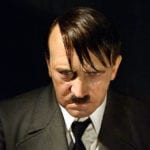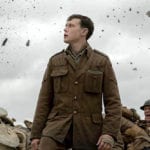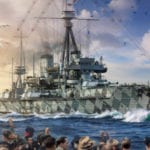 Weird Stuff
Weird Stuff  Weird Stuff
Weird Stuff  History
History 10 Times Trickery Won Battles
 Technology
Technology 10 Awesome Upgrades to Common Household Items
 Misconceptions
Misconceptions 10 Hilarious (and Totally Wrong) Misconceptions About Childbirth
 Weird Stuff
Weird Stuff 10 Warning Labels That Exist Because Someone Actually Tried It
 Health
Health Ten Confounding New Inventions from the World of Biomedicine
 Creepy
Creepy 10 Death Superstitions That Will Give You the Creeps
 Movies and TV
Movies and TV 10 Movies That Get Elite Jobs Right, According to Experts
 Weird Stuff
Weird Stuff 10 Times Real Laws Were Based on Bizarre Hypotheticals
 Animals
Animals 10 Inspiring Tales of Horses Being Human
 Weird Stuff
Weird Stuff 10 Typos That Accidentally Changed History
 History
History 10 Times Trickery Won Battles
 Technology
Technology 10 Awesome Upgrades to Common Household Items
Who's Behind Listverse?

Jamie Frater
Head Editor
Jamie founded Listverse due to an insatiable desire to share fascinating, obscure, and bizarre facts. He has been a guest speaker on numerous national radio and television stations and is a five time published author.
More About Us Misconceptions
Misconceptions 10 Hilarious (and Totally Wrong) Misconceptions About Childbirth
 Weird Stuff
Weird Stuff 10 Warning Labels That Exist Because Someone Actually Tried It
 Health
Health Ten Confounding New Inventions from the World of Biomedicine
 Creepy
Creepy 10 Death Superstitions That Will Give You the Creeps
 Movies and TV
Movies and TV 10 Movies That Get Elite Jobs Right, According to Experts
 Weird Stuff
Weird Stuff 10 Times Real Laws Were Based on Bizarre Hypotheticals
 Animals
Animals 10 Inspiring Tales of Horses Being Human
10 Goofy Warplanes Of World War II
World War II was the war where air power came into its own. Before that, airplanes could affect the course a battle, but they couldn’t change the tide of an entire war. Huge leaps forward in aerospace engineering led the air front to become a critical part of the war effort. Since it was so important, the contending nations were constantly developing new airplanes to defeat their enemies, to varying results. We’ve talked bizarre World War II aircraft before, and here are 10 more strange airplanes that you probably haven’t heard of from that era.
10 Kokusai Ki-105
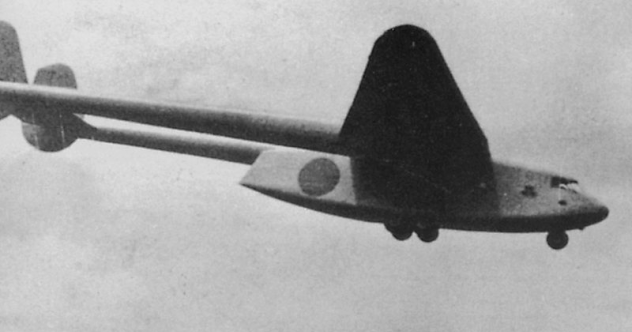
The war in the Pacific was characterized by large distances which required complex military logistics to move men and machines across the theater. In 1942, the Japanese military realized that it needed heavier aircraft to lift the supplies needed for a mobile war against Allied forces. Responding to an army request for a large glider airplane, the Kokusai company developed the Ku-7. This large twin-boom glider was big enough to carry light tanks and was one of the heaviest gliders designed during World War II. As the Pacific war dragged on, Japanese military leaders decided to focus on producing fighters and bombers instead of transportation aircraft. Development of the Ku-7 continued, albeit at a snail’s pace.
By 1944, the Japanese war effort was in trouble. Not only were they quickly losing ground to advancing Allied forces, but the Japanese military also faced a fuel crisis. Most of Japan’s oil-producing facilities had been either captured or rendered unusable by material shortages, so the military was forced to begin looking for alternatives. First, they planned to use pine nuts to produce an oil substitute. Unfortunately, the process took too long and led to mass deforestation. With that plan failing, the Japanese hatched a plan to fly fuel from Sumatra. Only one plane was big enough to carry the load—Kokusai’s long-neglected glider prototype. However, since gliders have poor range, Kokusai fitted the airframe with two engines, creating the Ki-105 flying fuel tank.
The plan had flaws from the beginning. In order to make the flight to Sumatra in the first place, the Ki-105 would have to burn a full fuel load. Once it reached Sumatra, the Ki-105 would be unable to carry unrefined crude oil, so any fuel would have to be drilled and refined in the oil fields. (The Ki-105 needed refined fuel to operate.) The small engines would have guzzled fuel on the return flight, ending with the plane using 80 percent of the fuel supply for the flight back, leaving little for actual war usage. If this logistical problem was not bad enough, the Ki-105 was also slow and unmaneuverable, making it an easy target for Allied fighters. Fortunately for Japanese pilots, the program never took off, although inexplicably, it was still being developed when the war ended in spite of the many glaring flaws.
9 Henschel Hs-132
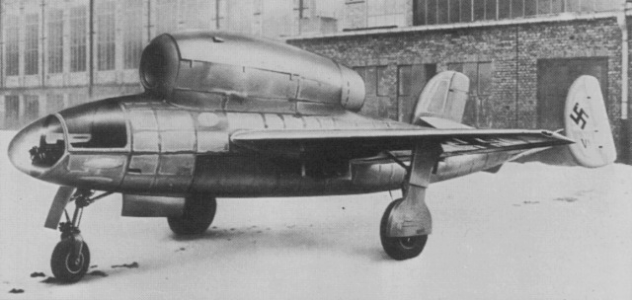
During the early stages of World War II, Allied forces were terrorized by the infamous Ju-87 Stuka dive-bomber. The Stuka was an extremely accurate attack aircraft, utilizing dive-bombing to inflict massive casualties when it was first introduced. However, as Allied aircraft reached higher performance standards, the Stuka was rapidly outclassed, eventually being torn apart by faster and more maneuverable fighter aircraft. Not content to give up on the idea of a Luftwaffe dive-bomber, the German air command (the RLM) issued a request for a new jet-powered dive-bomber.
The Henschel design was simple in concept. By mating a low-drag wing to a narrow, slender body, Henschel engineers were able to create a plane that was extremely fast, especially when diving. Part of this was their realization early in the design phase that a jet engine would give the best top speed for their aircraft. Because of this emphasis on speed and dive performance, the Hs-132 hosted a variety of unusual features. The jet engine was placed on the spine of the aircraft, a rare configuration for a jet-powered airplane. The engine placement and narrow fuselage necessitated an extremely strange arrangement for the pilot. Pilots of the Hs-132 would have to lie on their stomach in a prone position, looking out a small, glazed nose section to see where they were going.
Not only did the prone position of the pilot allow him to fit in the small fuselage, but it also had the advantage of counteracting the intense G-forces that a pilot would experience in a jet-powered dive, especially when the pilot would have to pull up to avoid hitting the ground. Unlike most German experimental aircraft from late in the war, the Hs-132 would have been a solid combat aircraft and would have given a headache to the Allies if introduced in large numbers. Fortunately for Allied ground forces, Soviet forces took over the Henschel factory just as the prototypes were finished. The completed airframes were taken into Soviet custody and lost to history. Although not influenced by the Hs-132, postwar British and American aircraft designs further experimented with the unusual prone cockpit position.
8 Blohm & Voss Bv 40
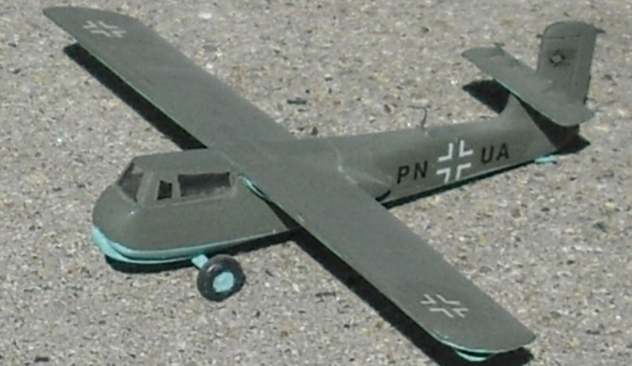
Central to the Allied victory were the efforts of the United States Army Air Force and UK Bomber Command. Together, these two air forces conducted endless bomber raids on the Germans, effectively denying them real war-making ability. Although the bombing campaign got off to a rough start, by 1944, Allied bombers were raiding nearly unimpeded over German cities and factories. Facing the greatly diminished effectiveness of the Luftwaffe, German airplane manufacturers proposed countless ways to combat the bomber menace. Among them was the Bv 40, an odd airplane from the mind of famed engineer Richard Vogt. This little plane is the only known example of a fighter glider.
Unable to rely on conventional materials and given the reduced technical ability of the German aviation industry, Vogt designed the glider as simply as possible. Putting the glider together was so easy that people without technical training could manufacture it from mostly nonstrategic wood components. Most of the metal was around the cockpit, accounting for 26 percent of the glider’s weight. Even though it was easy to build, Vogt wanted to make sure that the glider was hard to shoot down. Most aircraft had a wide radial engine mounted on the nose, which could be hit from 900 meters (3,000 ft) away. Since the glider did not need an engine, the fuselage was as narrow as possible. By having the pilot lie prone, the front cross-section was cut down significantly. The hope was that combining high speed with a small target would make the glider nearly impossible to hit.
The Bv 40’s mission profile required it to be towed aloft by two Bf 109 fighter planes. The tow planes would carry the Bv 40 to an altitude above the bomber stream and then disconnect it. With the glider free, the Bf 109 pilots would begin their attack run, and the Bv 40 followed shortly after. In order to gain enough speed for an effective attack, the glider pilot was expected to dive at an extremely steep 20-degree angle. At the high speeds involved, the pilot only had a few seconds to fire into his target, so the Bv 40 carried two devastating 30-millimeter cannons. Original designs included a small bomb that was towed behind the Bv 40, with the idea that the pilot would smash the bomb into a bomber on his second attack run before he had to glide down to the ground. This idea was eventually scraped. In spite of positive test results, the RLM decided to focus on turbojet-powered interceptors, and the Bv 40 never caught on.
7 Hafner Rotabuggy
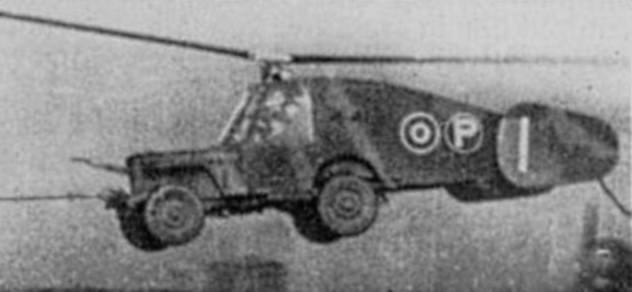
One of the biggest problems confronted by World War II military commanders was how to get combat vehicles to the front lines. Many countries experimented with ideas. The Germans built gliders big enough to carry tanks, and the Russians put glider wings on a pocket tank. While the British eventually settled on the German approach, they initially went with the crazy idea of putting helicopter propellers on all sorts of vehicles, led by the (possibly insane) aerospace engineer Raoul Hafner.
Hafner had many ideas on how to increase the mobility of British forces. One of his earliest designs was the Rotachute, a small autogiro that could be dropped from a transport plane with a single soldier inside. This was an attempt to replace the parachute for airborne assaults. When it seemed like that idea would not catch on, Hafner moved to two new ideas—the Rotabuggy and the Rotatank. Of the two, the Rotabuggy was actually built and tested.
Before he could attach a rotor to a jeep, Hafner first had to test whether a jeep could survive intense falls. To this end, he loaded a jeep with concrete and dropped it from nearly 2.4 meters (8 ft). After that test proved successful, Hafner designed a rotor and a tail assemblage to make the jeep a complete autogiro. Initially, the Rotabuggy was tested by towing it behind a Diamond T truck. When the Rotabuggy failed to catch air, Hafner decided to go with a more powerful car and towed his autogiro behind a supercharged Bentley. The Rotabuggy took flight for a short hop, proving that the airframe at least had lift.
RAF commanders took interest in the project, and the first flight test was committed. The Rotabuggy was towed behind a Whitley bomber, but the test went extremely poorly. Even though it could technically fly, the Rotabuggy was a beast to handle. With the Rotabuggy thrashing out of control, the pilot wrestled with the control column, while the Whitley pilot could barely keep his plane in the air. When the crew finally landed, none of them were happy. Unfazed, Hafner ironed out the undesirable flight characteristics until his autogiro flew quite well. By that time, large vehicle-carrying gliders had entered service, leaving the Rotabuggy obsolete and the Rotatank just a dream.
6 Boeing YB-40
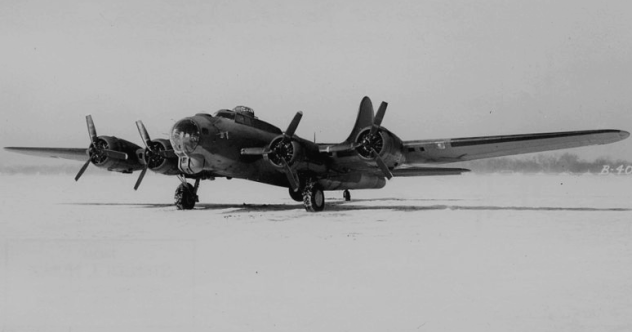
As previously mentioned, bomber warfare was a key part of the Allied strategy during World War II. Both the British and American air forces unrelentingly pounded the German war effort. However, when the bombing campaign started, bomber crews faced a fully equipped and trained Luftwaffe. Compounding the danger, neither the British nor the Americans had effective long-range escort fighters. The bombers were on their own and were sliced to pieces. The British bomber command switched operations to night bombing, while the Americans continued daylight raids. With mounting losses, American commanders had to come up with creative solutions until a dedicated escort fighter was available. One of their ideas was the YB-40, a heavily modified B-17 that was fitted with an absurd amount of machine guns.
To create the YB-40, the Air Force hired the Vega corporation to modify 13 existing B-17 airframes. The modified B-17s gained a second dorsal turret, double machine guns on the waist positions, and a chin turret under the nose, increasing the machine gun count to 16. The chin turret was especially important because it allowed the YB-40 to defend against head-on attacks, a capability not present in the standard B-17. Bombs were removed for the YB-40, and the bomb bay was instead filled with ammunition, tripling the rounds that the plane could carry.
Unfortunately, these upgrades made the airplane heavier than a standard B-17, which caused problems on its first sorties. In combat, the YB-40 was slower than the rest of the B-17 bombers, causing the formation to have to hold back with the straggling gunship. With the bomber formations further endangered and with no significant advantage to having the gunship around, development was stopped after a handful of missions, and the Air Force decided to wait for long-range escort fighters. Although the airplane was a failure, the new chin turret was kept on further B-17 models, greatly increasing their survivability.
An interesting side note of the YB-40 project is the urban legend of Guido Rossi. According to legend, Rossi was an ace Italian fighter pilot who flew a captured American P-38. Using his captured plane, Rossi would sneak up on bomber formations and wreak havoc on them from the inside. To eliminate Rossi, the Air Force assigned a YB-40 crew led by pilot Harold Fischer to find and kill the Italian ace. Fischer learned that Rossi’s mother lived not far from his base and visited her, later painting a racy image of the woman on his bomber’s nose. A few missions later, Fischer’s crew spotted a P-38 trailing them. Confident that this was Rossi, Fischer began extolling the sexual abilities of Rossi’s mother on the radio. Enraged by the messages and the explicit nose art, Rossi attacked the YB-40, resulting in a long aerial duel. Eventually, Rossi was shot down, and Fischer won a medal for his actions. This story is fun but certainly untrue. No YB-40s were stationed in the Mediterranean, and there was never an Italian pilot named Guido Rossi. Still, the urban legend perpetuated and makes for a great read.
5 Interstate TDR
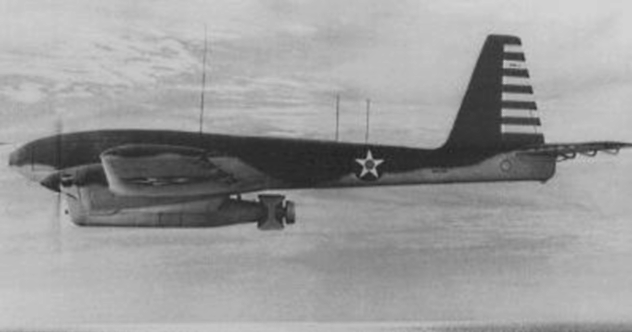
Drone warfare is one of the hallmarks of 21st-century conflict. The largest armies of the world have all invested in using unmanned aerial vehicles (UAVs) for a variety of roles, some of which have caused controversy. Although UAVs are generally seen as a new invention, they were used as far back as World War II. While the German Luftwaffe invested in unpiloted guided missiles, the United States was the first to put remotely piloted drones into combat. The United States Navy invested in two drone types, the second of which was the successful TDR “flying torpedo.”
Interest in flying drones began in 1936 but was not pursued in earnest until World War II began. When the war started, engineers from the RCA television company developed a compact receiver and transmitter device, allowing the TDR to be controlled via television transmitter. Navy leadership believed that precision weaponry would be critical in stopping Japanese shipping and ordered development of the drone. In order to reduce the use of strategic materials on a flying bomb, the TDR was built mostly out of wood and had a simple, shark-like construction.
The TDR was initially launched from the ground by a control crew. Once the drone reached operating altitude, a specially modified TBM-1C Avenger torpedo bomber took control and would hang back, guiding the TDR to its target. One squadron of Avenger crews was assigned to fly the bombs and completed 50 missions with 31 successful strikes and no lost control planes. Japanese forces were supposedly shocked by the attacks because it appeared that the Americans were resorting to kamikaze tactics.
In spite of the successful strikes, the Navy became disenchanted with the idea. By 1944, the Allies had near total air superiority in the Pacific theater, and the need for complex experimental weaponry fell out of favor to conventional aircraft. When the TDR was pitched to the Army, fears that Axis engineers would be able to jam the guidance system prevented any contracts from being made. The TDR was a concept that was too far ahead of its time but nonetheless was the ancestor to modern cruise missile and UAV technology.
4 Douglas XB-42 Mixmaster

With World War II well underway, the well-known American aircraft company Douglas decided to begin design on a revolutionary bomber aircraft to bridge the gap between light attack bombers and high-altitude heavy bombers. Contrary to the USAAF approach that spawned heavy bombers like the B-17, Douglas opted to create a bomber fast enough to outrun Luftwaffe interceptors. If the airplane was sufficiently fast, Douglas engineers would be able to dedicate most of the fuselage to bomb load, cutting back on the huge amount of defensive gunners present on most heavy bombers.
In order to keep the airframe as clean as possible, Douglas gave the XB-42 an unusual power plant. Two engines were placed within the fuselage instead of on the wings, driving two contra-rotating pusher propellers in the back. The XB-42 was the only bomber during World War II to adopt this power plant layout, and it required a complex and expensive drivetrain system. With speed as the main priority, the XB-42 only had a crew of three. The pilot and co-pilot were in side-by-side bubble canopies instead of together in the same cockpit, and the bombardier was in the nose. Defensive armament was kept to a minimum of only two remote-controlled defensive turrets. All of the innovations paid off. The XB-42 flew at an incredible top speed of 660 kilometers per hour (410 mph) and carried a 3,600-kilogram (8,000 lb) bomb load, double that of the bigger and slower B-17.
Although the XB-42 was an excellent advanced bomber, it appeared too late in the war to see service. By the time the prototype stage ended and the aircraft was ready for mass production, the war was over. Douglas’s pet project became a victim to changing Air Force desires to fund jet-powered aircraft instead of older piston-powered types. The original prototype of the XB-42 was grounded while Douglas built another prototype with jet engines. This bomber, the XB-43 Jetmaster, was successful but failed to gain the attention of the Air Force. Notably, the XB-43 was the first US jet bomber, paving the way for other designs. The original XB-42 fuselage still exists, stored by the National Air and Space Museum and awaiting restoration. During shipment, the wings mysteriously disappeared and have never been seen since.
3 General Aircraft G.A.L. 38 Fleet Shadower
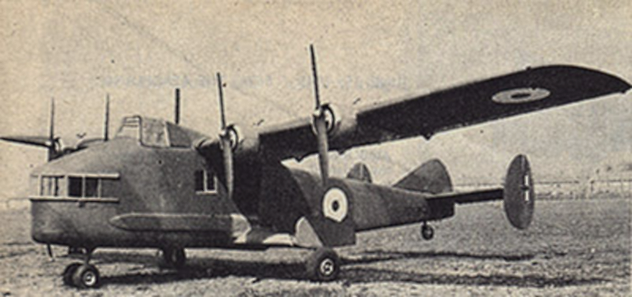
Modern aircraft are designed to do nearly everything in a combat situation, to the point that very few specialized aircraft types exist anymore. But before the days of electronics and precision-guided weaponry, airplanes were designed to fit very specific combat roles. During World War II, the need for very specific combat roles saw a variety of absurdly specialized airplanes, including the General Aircraft G.A.L. 38 Fleet Shadower, one of the most specialized airplanes in history.
At the beginning of World War II, the United Kingdom faced the threat of Germany’s large navy, the Kreigsmarine, blocking English waterways and making logistics an impossible nightmare for the United Kingdom. Since the ocean is big, it was extremely difficult to acquire up-to-date intelligence on ship positions, especially before the advent of radar. To track Kreigsmarine ships, the Admiralty called for an observation airplane specifically designed to be launched from aircraft carriers, fly quietly at low speed and high altitude, follow enemy fleets, radio their positions, and do it all at night. Two companies (Airspeed and General Aircraft) responded with nearly identical airplanes, but the General Aircraft version looked just slightly weirder.
With two sets of wings, the G.A.L. 38 was technically a biplane, even though the lower pair was one-third the length of the higher pair. A crew of three operated the airplane—a pilot, an observer in the glazed nose, and a radio operator in the rear fuselage. Since airplanes are much faster than battleships, the G.A.L. 38 was designed to fly extremely slowly. To do this, the designers fitted the wing with specifically engineered blow flaps that dropped into the wash of the propellers to keep the plane under control at low speed. This would be essential for a long night of fleet shadowing.
Like most extremely specialized airplanes, the G.A.L. 38 became unnecessary. Radar became feasible, and the Admiralty decided to focus on patrol bombers like the American-produced Liberator and large patrol flying boats like the Sunderland. The G.A.L. 38 never saw service and ended up a weird little footnote in British aviation history.
2 Messerschmitt Me-328

While the G.A.L. 38 suffered because it had too specific of a role, the Me-328 never entered service because the Luftwaffe and Messerschmitt could never figure out exactly what they wanted the fighter to do. The basic Me-328 was an extremely small and simple fighter plane. Three versions were imagined. One was a small, unpowered glider fighter, another was powered by the same pulse jet engines as the V-1 bombs, and the last by conventional jet engines. All of them shared a similar fuselage and simple wooden construction.
In its original form, the Me-328 was a parasite fighter. The idea was that the Me-328 would be carried aloft by a bomber and launched by catapult or tow line to defend the bomber formation. Tests of the original airframe were carried out by launching unpowered glider versions from a Do-217 bomber. The results were satisfactory, but production of the fighter was not a high priority in 1943. Later that year, problems ensued during static tests of the Me-328. When fitted with the pulse jet engines, the noise and vibration nearly shook the fighter apart, forcing the Messerschmitt designers to revise the engine placement and redesign the wings. By the time that the trouble with the engines was sorted out, the war situation had deteriorated for Germany. With the German bombing campaign nearly nonexistent, the Luftwaffe saw no use for a parasite fighter to defend bomber formations.
However, since the Luftwaffe was also desperate for any sort of airplane to turn the tide of the air war, Messerschmitt proposed a variety of options for the Me-328. Hitler favored a bomber version of the Me-328 powered by four pulse jet engines, but the idea never took off. Messerschmitt investigated using the diminutive fighter as a defensive interceptor that could be launched by U-boat submarines. That idea never left the drawing board, so Messerschmitt proposed to use the Me-328 as a ground-launched point defense interceptor to fight American bomber formations. The Me-328 was better suited for this role but lost out to the Ba 349 Natter. As a final possibility, the Messerschmitt pitched using their fighter as a suicide airplane fitted with a large bomb. Even in this role, the Me-328 lost out to another airplane, the piloted version of the V-1 flying bomb. Soon, the war ended, and Messerschmitt never found a role for their project.
1 Caproni Campini N.1
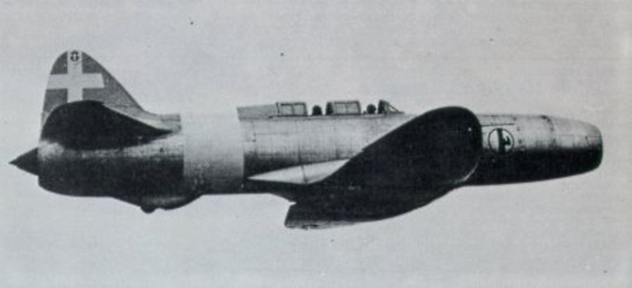
The Caproni Campini N.1 may look and sound like a jet, but it’s not actually a jet. This test airplane was designed to get Italy one step closer to the jet age. By the time that it flew in 1940, Germany had already flown the world’s first true jet aircraft but had kept the project a closely guarded secret. Because of that, Italy was credited as having developed the first practical jet turbine engine, even though nobody today considers the N.1 to be a true jet.
While the British and the Germans were experimenting with the gas turbine engine that would lead to the first true jet aircraft, Italian engineer Secondo Campini decided to go with his own power plant. Campini invented an engine called a “motorjet.” A conventional propeller engine instead of the now standard turbine was mounted in the forward fuselage, driving a large compressor fan. Air was sucked in the front of the nose and expelled out the back but did not have the same internal mechanisms as a true gas turbine engine. Rather, the N.1 engine was what modern engineers would call a ducted fan. Interestingly enough, the N.1 had a small area at the end of the engine where fuel could be ignited and expelled backward as a rudimentary afterburner. With the N.1, the front and back of the engine was jet-like, but everything in between was wrong, and the Italian test plane is not considered a part of the jet club.
Although the design was innovative, the performance was unspectacular. The N.1 was large, bulky, and not particularly maneuverable. Even though it was not intended to be a combat design, the large size of the motorjet engine would have proved a deterrent for combat aircraft. Due to its bulk and the limitations of the motorjet engine, the N.1 could barely make a top speed of 375 kilometers per hour (233 mph), much slower than contemporary fighter aircraft, as well as most contemporary bombers. During its first long-range flight, the afterburner consumed too much fuel and was shut down, leaving the N.1 to fly only as a ducted fan.
All of these setbacks did not inspire confidence in Italian commanders, who by 1942 had more pressing issues (such as defending their homeland) than sinking money into a questionable concept. Testing of the N.1 ground to a halt, and the plane was put into storage. Although the Soviet Union experimented with a similar concept, the motorjet was never used on a production aircraft. Somehow, the prototype N.1 survived the war and is now a museum piece, demonstrating an interesting technology that was ultimately a dead end.
I am a physics student who writes on the side and have published a few things on this website. Check out my Instagram and Twitter for articles from my personal blog.


